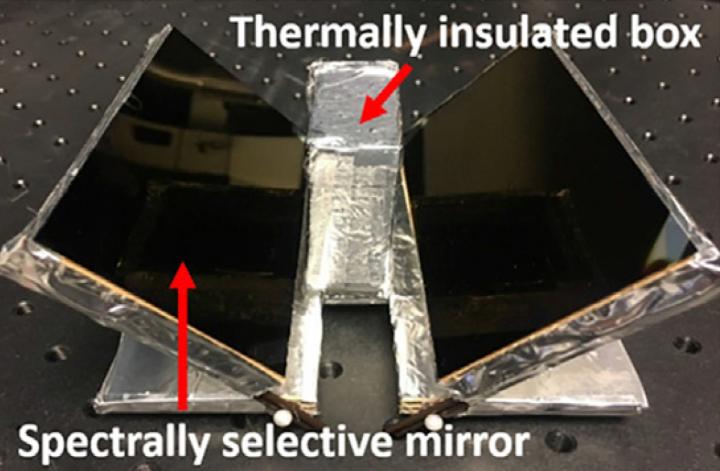Sun-blocking nanomaterial offers ‘magic’ way to cool buildings without electricity
System could eventually be scaled up to cover rooftops and ultimately reduce society's reliance on fossil fuels

Your support helps us to tell the story
From reproductive rights to climate change to Big Tech, The Independent is on the ground when the story is developing. Whether it's investigating the financials of Elon Musk's pro-Trump PAC or producing our latest documentary, 'The A Word', which shines a light on the American women fighting for reproductive rights, we know how important it is to parse out the facts from the messaging.
At such a critical moment in US history, we need reporters on the ground. Your donation allows us to keep sending journalists to speak to both sides of the story.
The Independent is trusted by Americans across the entire political spectrum. And unlike many other quality news outlets, we choose not to lock Americans out of our reporting and analysis with paywalls. We believe quality journalism should be available to everyone, paid for by those who can afford it.
Your support makes all the difference.Researchers have developed an electricity-free method to cool buildings while simultaneously trapping the sun's heat for future use.
A team from the University at Buffalo were able to turbo charge a passive cooling technique – known as radiative sky cooling – by using a sun-blocking nanomaterial.
The system could eventually be scaled up to cover rooftops and ultimately reduce society's reliance on fossil fuels for cooling and heating, the researchers said.
"There is a great need for heating and cooling in our daily life, especially cooling in the warming world," said Qiaoqiang Gan, a professor of electrical engineering and lead author of the study.
"Importantly, our system does not simply waste the solar input energy... It can retain both the solar heating and radiative cooling effects in a single system with no need of electricity. It's really sort of a 'magic' system of ice and fire."
When tested in laboratory conditions, the eco-friendly technology lowered the inside temperature by more than 12C when exposed to direct sunlight. It simultaneously captured enough solar energy to heat water to around 60C.
The system is currently only 70 centimetres squared and consists of two mirrors made of thin layers of silver and silicon dioxide. It works by converting visible and near-infrared waves into heat, while mid-infrared waves are directed towards an emitter in the middle of the two mirrors to disperse the heat.

"One of the key innovations of our system is the ability to separate and retain the solar heating and radiative cooling at different components in a single system," said co-first author Lyu Zhou.
"During the night, radiative cooling is easy because we don't have solar input, so thermal emissions just go out and we realize radiative cooling easily. But daytime cooling is a challenge because the sun is shining. In this situation, you need to find strategies to separate solar heating from the cooling area."
The lab responsible for the method previously developed a cone-shaped system that facilitated electricity-free cooling in crowded cities, which they used in the most recent advance.
The research was published in the scientific journal Cell Reports Physical Science this week.

Join our commenting forum
Join thought-provoking conversations, follow other Independent readers and see their replies
Comments